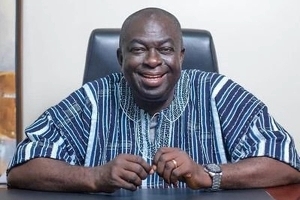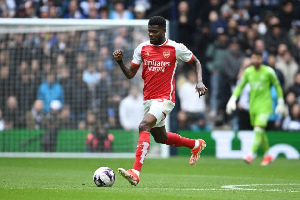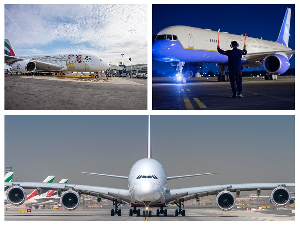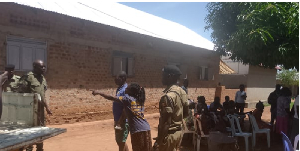Opinions of Sunday, 21 May 2023
Columnist: Samir Bhattacharya
Making sense of crisis in Sudan
Sudan is bleeding. Since the early hours of 15th May, violence broke out between Sudan National Army led by General Abdel Fattah al-Burhan, commander of the Sudanese National Army, also known as the SAF (Sudanese Armed Force), and General Muhammad Hamdan' Hemedti', Dagalo, commander of the paramilitary group RSF (Rapid Support Force).
So far, more than 604 people, including civilians, have been killed, and thousands more injured. Another 700000 people got displaced internally. This is on top of 3.7 million people who were already internally displaced before the conflict began.
Thousands more have fled to neighboring countries like Chad, Central African Republic, Egypt and South Sudan. There have been reports of looting and robbery. Civilians are bearing the brunt of the conflict as they're faced with a shortage of food and water supply as well.
Meanwhile, multiple cease-fires between the warring parties have been regularly violated and have failed to stop fighting... Ahead of Eid-ul-Fitr, gunfire continued, escalating the risk of an all-out civil war. The fighting started on April 13 when RSF forces invaded Merowe town, located 210 kilometres north of the capital, and tried to capture the airport. In the early hours of April 15, the Sudanese people woke up to a violent fight in Khartoum and other parts of the country, and so far, there is no sign of de-escalation.
What makes this conflict in Sudan so intractable? This conflict needs to be considered in terms of a cake with three overlapping layers: local, regional and global. These three layers, which feed through and affect one another, represent various stages of conflict escalation, engagement, and potential resolution.
And this conflict in Sudan is a prime example of a local conflict that is becoming increasingly intertwined with regional and international power dynamics, making it impossible to find a standalone solution.
First Layer- Local level
If the Sudanese problem can be divided into three layers, the local level corresponds to the conflict's primary driver. In essence, this layer is concerned with the issue of who will control Sudan and under what type of political structure.
Around 2003, to combat non-Arab individuals who started rising against his rule, Bashir enlisted the Janjaweed, a collection of Arab tribal militias primarily drawn from tribes that traded camels. In 2013, Bashir elevated this tribal militia group parallel to the national army as a semi-organised paramilitary structure under Hemedti's leadership BS established a separate command structure and funds for RSF.
Both the SAF and the RSF have extensive patronage and ethnic networks in Sudan. The Islamists surrounding General Burhan are particularly well-entrenched in the Sudanese administration and business. Most likely, al-Burhan was under pressure to bring down Hemedti from the top military officers in the army, who were either Islamists or Bashir supporters or both.
This Islamist fraction of the army will not accept any outcome other than the complete demobilisation of the RSF and Hemedti's exile from Sudan. And they might launch a coup against Burhan itself if necessary.
Second Layer- Regional level
The second layer at the regional level is about who can have the most significant influence in Sudan and the larger Red Sea region. Sudan shares its border with seven countries: Chad, Ethiopia, Eritrea, South Sudan, the Central African Republic, Libya, and Egypt.
As all these countries have their own vested interests, the conflict risks getting more interwoven with regional rivalries and power struggles. There is a Burhan and a Hemedti supporter in practically every surrounding nation. Therefore, if the disagreement persists, regional friends of both leaders might step forward to support their ally.
Third layer- International Level
The third layer involves the international power rivalry playing out in the Sudanese crisis. In this layer, Sudan serves as a microcosm for a struggle for regional and international power.
Energy-rich United Arab Emirates and Saudi Arabia have long sought to influence Sudan's politics. Both have made significant investments in sectors including agriculture, where Sudan has tremendous potential, aviation, and ports near the Red Sea coast.
Egypt's primary concern in Sudan is the safety of its water resources since the Nile runs through Sudan. Egypt is attempting to sway Sudan in order to assert its geopolitical supremacy and settle the GERD (Grand Ethiopian Renaissance Dam) dispute with Ethiopia.
Turkey's interests in Sudan and the broader Red Sea region hinge on trade and security. Turkey is keen to rebuild the Suakin Island facility in Sudan to reduce its dependency on Egypt.
Russia has a significant presence in Sudan owing to Wagner, a private military company. Russia also seeks to build a naval station in Port Sudan under a 25-year leasing arrangement, which would house about 300 Russian troops. Russia's proposal for a port in Sudan has received public support from military leaders in Sudan, particularly Hemedti.
China is highly concerned about its accessibility to the Red Sea trade route and the over 1000 Chinese nationals who live in Sudan. China has not taken any side so far, calling for restraint and de-escalation. However, if the conflict spills into civil war and Chinese interest in Sudan is threatened, there may be a more active role, primarily through its special envoy for the Horn of Africa. For the EU, stability in Sudan is essential to control migration.
Last but not least, the ongoing conflict in Sudan brings to light the United States waning influence in the region. The United States is trying to pressure Sudan's warring factions to accept a ceasefire in exchange for some financial incentives for development and debt relief, in vain.
The way forward
The fact that the three layers are inextricably interwoven presents a challenge for the international community. The two competing factions are engaged in a personal power battle on a personal level as they contend for control of Sudan and its rich resources. However, things could become more complicated if more players become involved in this war.
The international community must therefore reassess and rework its strategy for mediating Sudanese peace. Coordinated steps must be made so that neighbouring and regional states maintain neutrality. Instead, regional forces must participate in the negotiation process, as was the case with the African Union's negotiation of the peace accord in Ethiopia.













